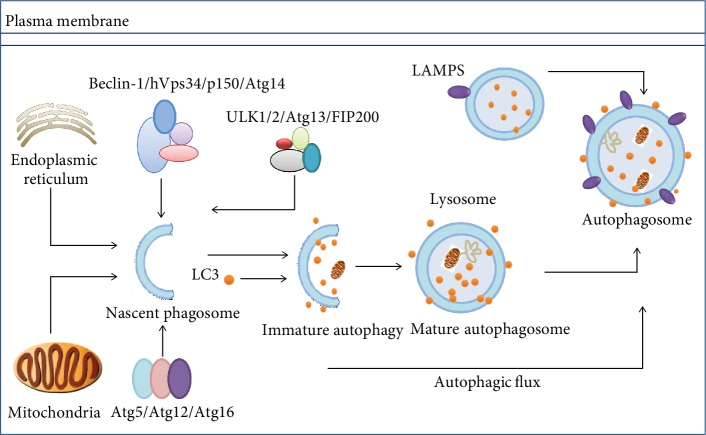Figure 2.
Overview of macroautophagy. Despite the occurrence of two membranes, bulk proteins and damaged organelles (ER and mitochondria) along with selective cargo within the cytoplasm are being engulfed, by small autophagosomes that fuse later to give full-sized autophagosomes. A number of autophagy-linked proteins and protein complexes are taking part in a highly coordinated procedure. Following fusion of autophagosomes with lysosomes, autolysosomes that decompose autophagic cargo to release recyclable biomolecules and macromolecules within the cytoplasm are formed (proteins involved: autophagy-linked enzymes Atg5, Atg12, Atg13, Atg14, and Atg16; autophagy-related proteins; Beclin-1 (Atg6); p150; (Vps15) serine/threonine-protein kinase. Vps34: class III phosphoinositide 3-kinase; Atg7: ubiquitin-E1-like enzyme; ULK1/2: unc-51-like autophagy-activating kinase 1/2; FIP200: family-interacting protein of 200 kD; LAMP2A: lysosomal-linked membrane protein 2A; LC3: microtubule-associated proteins 1A/1B light chain 3).

